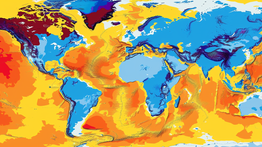
Bucyrus' Climate Reality vs. Media Projections
This article delves into the contrasting narratives of climate change as presented by historical data versus media projections in Bucyrus, Ohio.

This article delves into the contrasting narratives of climate change as presented by historical data versus media projections in Bucyrus, Ohio.

Challenging the narratives woven by climatologist Michael Mann's 'Hockey Stick' graph, this article delves into the complexities and contentions surrounding historical climate data reconstruction.

Global temperature records are crucial for understanding climate patterns and trends. A process called homogenization is used to maintain these records, a process designed to create a consistent and comparable dataset by adjusting for various non-climatic factors.

The US temperature record, as provided by NASA and the National Oceanic and Atmospheric Administration (NOAA), has been subject to scrutiny and claims of data manipulation.

The examination of sea level rise data reveals alterations in the historical record, which have shifted the narrative from a lack of acceleration to a rapid increase in sea level.

The accurate recording and interpretation of historical temperature data are critical for understanding climate trends. This article aims to scrutinize the adjustments made to historical temperature records and how these modifications impact the perceived trends in global temperature data.

The concept of measuring a singular "global temperature" is inherently complex due to the natural vast temperature variations across different geographical locations. To derive an accurate average global temperature, extensive data from a multitude of locations is required.

The National Climate Assessment provides forecasts and analyses on climate trends and their impacts across the United States. One of its predictions highlights an expected increase in the number of very hot days in the U.S. Midwest.